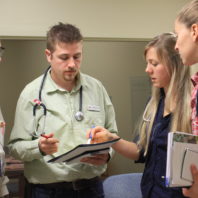The Longest Donors: Giving Back for 45 Years
Marcia Gossard - Director of Communications and Marketing
In 1966 when Norm Rantanen (’67 DVM, ’71 M.S.) was in his third year of veterinary school, he signed up for the early commissioning program with the U.S. Air Force. When the time came for him and his wife Marlene to be stationed for his first assignment with the Armed Forces Institute of Pathology at the Walter Reed Army post in Washington, D.C., the young couple found they needed a little financial help to make the move. They applied for the WSU College of Veterinary Medicine student loan fund and received $300.
“It meant a lot to us at the time to get that money,” says Marlene. “We paid it back at $10 a month and just never quit.”
» More ...







